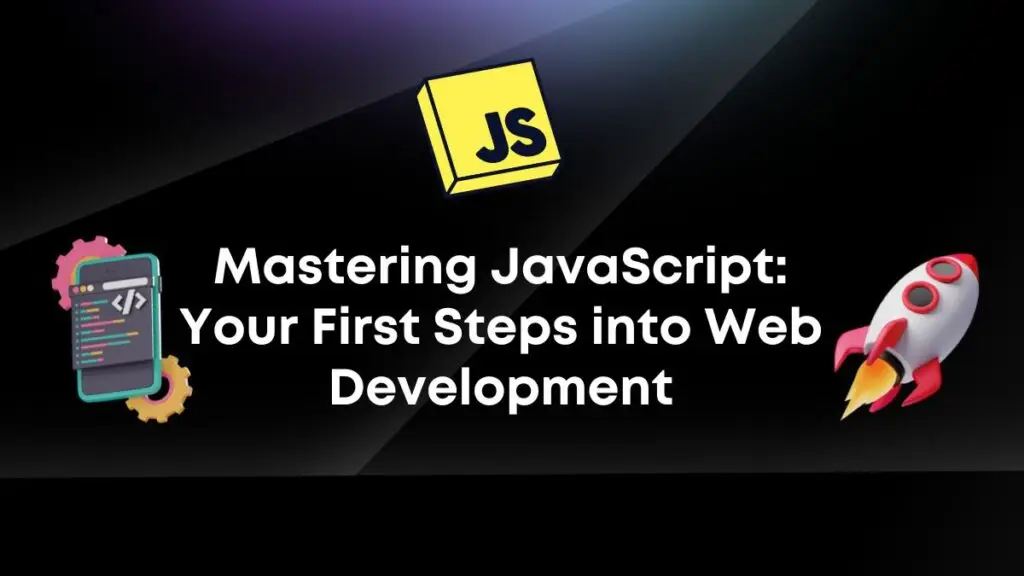JavaScript is a cornerstone of modern web development, enabling developers to create interactive, dynamic, and responsive websites. Whether you’re building simple forms or complex web applications, JavaScript provides the foundation for almost every web-based project. In this guide, we’ll explore the fundamentals of JavaScript and equip you with the knowledge you need to create your web experiences.
Why JavaScript?
JavaScript is a must-learn language for several reasons:
- Ubiquity: JavaScript runs in all modern browsers, meaning it works on almost every device with internet access.
- Versatility: You can use JavaScript for front-end development, back-end development (with Node.js), and even mobile app development.
- Rich Ecosystem: With thousands of libraries, frameworks, and tools, JavaScript’s ecosystem is vast, allowing you to extend your capabilities quickly.
Getting Started with JavaScript
To start writing JavaScript, all you need is a text editor (like VSCode) and a browser (like Chrome). JavaScript is often written directly in HTML files or linked as a separate .js file.
Example:
<!DOCTYPE html>
<html lang="en">
<head>
<meta charset="UTF-8">
<meta name="viewport" content="width=device-width, initial-scale=1.0">
<title>JavaScript Example</title>
</head>
<body>
<h1>Welcome to JavaScript</h1>
<button id="greetButton">Click me</button>
<script>
document.getElementById('greetButton').addEventListener('click', function() {
alert('Hello, World!');
});
</script>
</body>
</html>In this example, JavaScript is used to add functionality to a button. When clicked, it triggers an alert box displaying a message.
JavaScript Syntax Basics
Before diving into more complex projects, let’s cover JavaScript’s core concepts and syntax.
1. Variables
Variables store data that you can use later. JavaScript uses var, let, and const to declare variables. However, let and const are preferred for modern JavaScript as they provide better scoping rules.
Example:
let name = 'John';
const age = 25;
console.log(`Name: ${name}, Age: ${age}`);In this example, name is declared using let because it might change, while age is declared with const because it’s a constant.
2. Data Types
JavaScript has several basic data types:
String: Text, e.g., 'Hello'
Number: Numeric values, e.g., 42
Boolean: True or false values, e.g., true
Array: Collections of data, e.g., [1, 2, 3]
Object: Key-value pairs, e.g., { name: 'Alice', age: 30 }Example:
let message = 'Hello, JavaScript!';
let isLearning = true;
let scores = [95, 85, 76];
let user = { name: 'Alice', age: 30 };3. Operators
JavaScript supports arithmetic, comparison, and logical operators, allowing you to perform calculations, make comparisons, and control the flow of logic.
Example:
let x = 10;
let y = 5;
console.log(x + y); // Output: 15
console.log(x > y); // Output: true
console.log(x === 10 && y === 5); // Output: true4. Functions
Functions are reusable blocks of code designed to perform specific tasks. You define a function using the function keyword, followed by its name and parameters.
Example:
function greet(name) {
return `Hello, ${name}!`;
}
console.log(greet('Technical Mickey')); // Output: Hello, Technical Mickey!Functions can be called multiple times with different arguments, making them essential for code reuse.
Control Flow
Control flow structures like if statements, loops, and switch statements allow you to determine the flow of your program based on conditions.
1. Conditional Statements
Conditional statements control actions based on whether a condition is true or false.
Example:
let age = 20;
if (age >= 18) {
console.log('You are an adult.');
} else {
console.log('You are a minor.');
}2. Loops
Loops let you execute a block of code multiple times. The most common loops are for loops and while loops.
Example:
for (let i = 0; i < 5; i++) {
console.log(`Iteration: ${i}`);
}This loop prints out numbers from 0 to 4.
Interacting with the DOM
One of the most powerful aspects of JavaScript is its ability to interact with the Document Object Model (DOM). The DOM is a representation of the HTML structure of a web page, and JavaScript can be used to manipulate it.
Example: Changing Content Dynamically
<!DOCTYPE html>
<html>
<body>
<h1 id="heading">Hello, World!</h1>
<button id="changeButton">Change Heading</button>
<script>
document.getElementById('changeButton').addEventListener('click', function() {
document.getElementById('heading').textContent = 'JavaScript is awesome!';
});
</script>
</body>
</html>In this example, clicking the button changes the content of the heading dynamically.
JavaScript Best Practices
As you continue to write JavaScript, it’s important to follow best practices to ensure your code is clean, efficient, and easy to maintain:
- Use Descriptive Variable Names: Avoid single-letter names. Instead of
x, usecounterortotalScore. - Comment Your Code: Leave comments in your code to explain complex logic.
- Avoid Global Variables: Where possible, limit the use of global variables to reduce the risk of conflicts.
- Test and Debug: Use the browser’s developer tools to test and debug your JavaScript.
JavaScript Projects for Beginners
Once you’ve grasped the fundamentals, practice is key to mastery. Here are a few project ideas to get you started:
- To-Do List App: Build a simple app where users can add, remove, and mark tasks as complete.
- Calculator: Create a basic calculator that can perform simple arithmetic operations.
- Form Validation: Design a form that checks user input in real-time and provides error messages if the data is incorrect.
Conclusion
Mastering JavaScript is a critical step toward becoming a proficient web developer. From simple interactions to complex applications, JavaScript’s versatility and power make it an invaluable skill. With this foundation, you’re now ready to dive deeper into the language and explore the vast ecosystem of libraries and frameworks that can elevate your web development projects.
So, fire up your code editor, start experimenting, and unlock the world of web development with JavaScript!
Happy coding!

